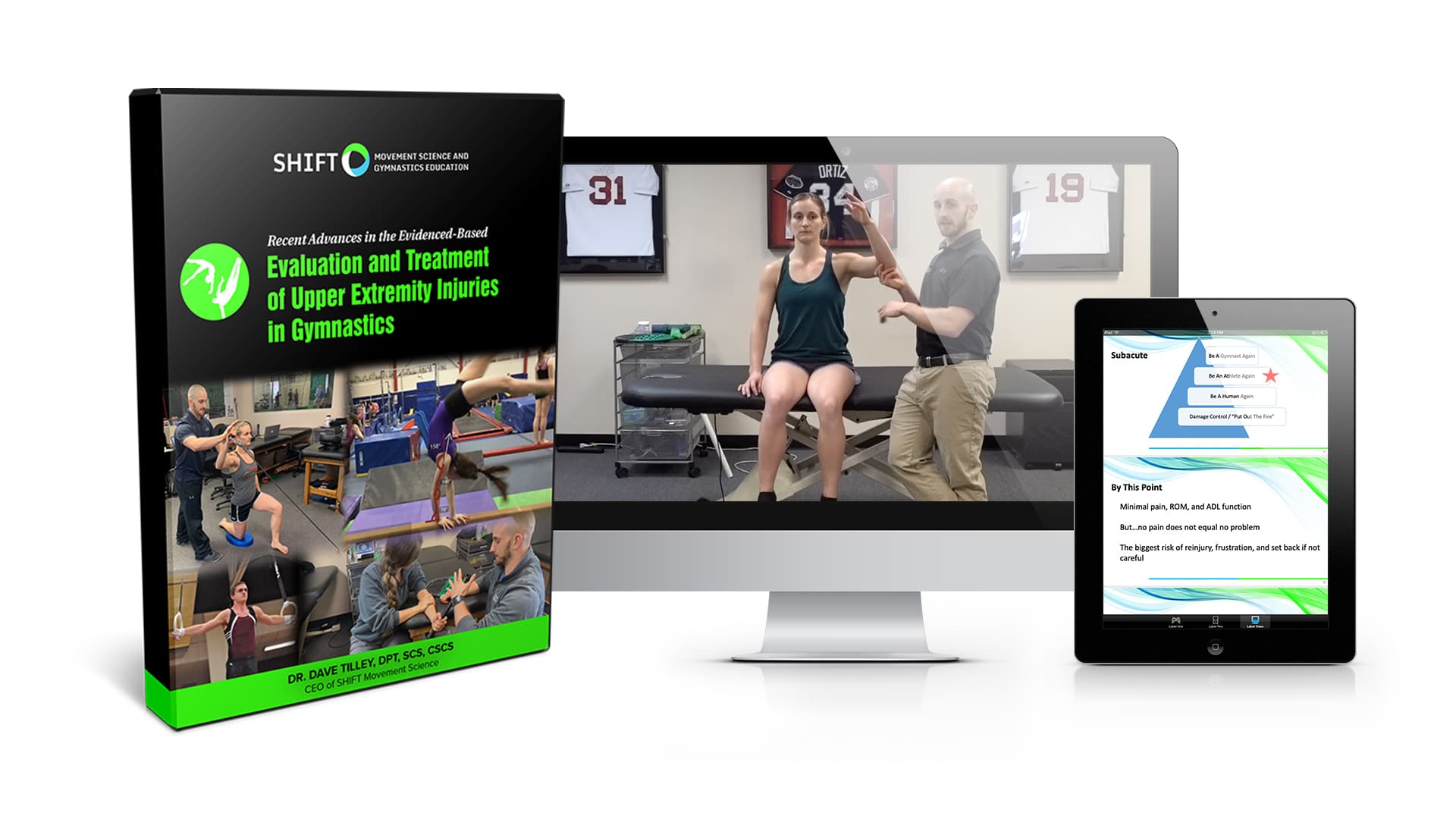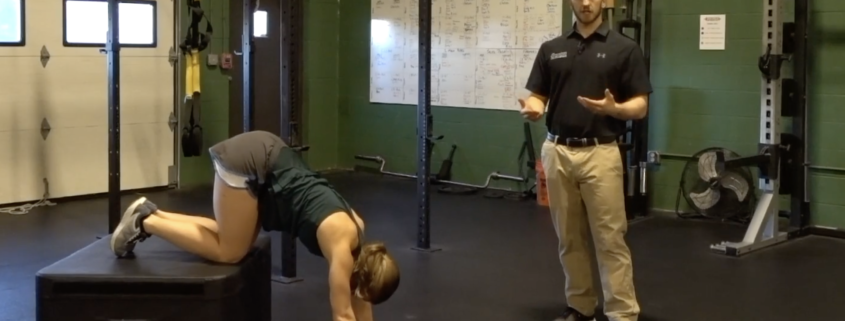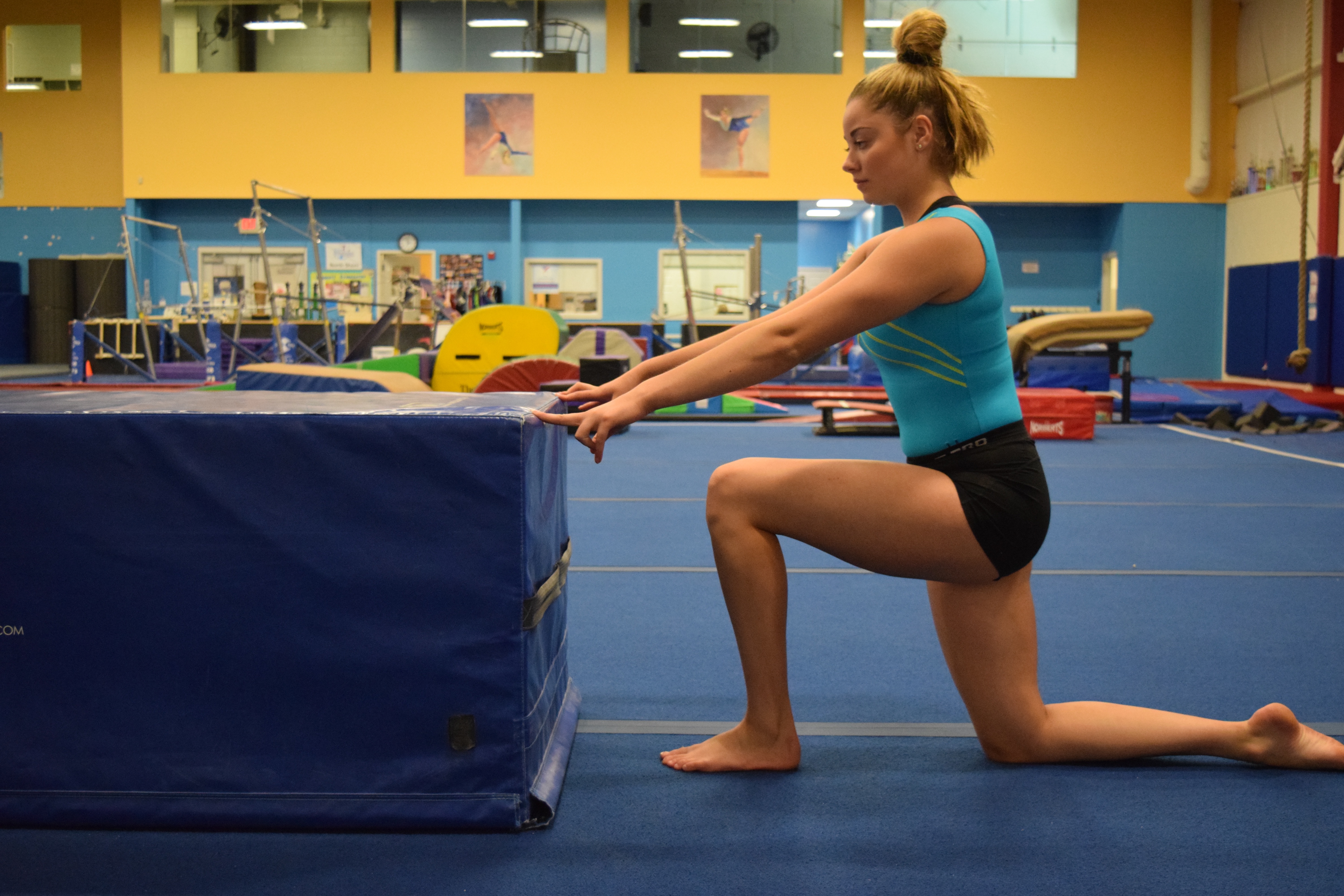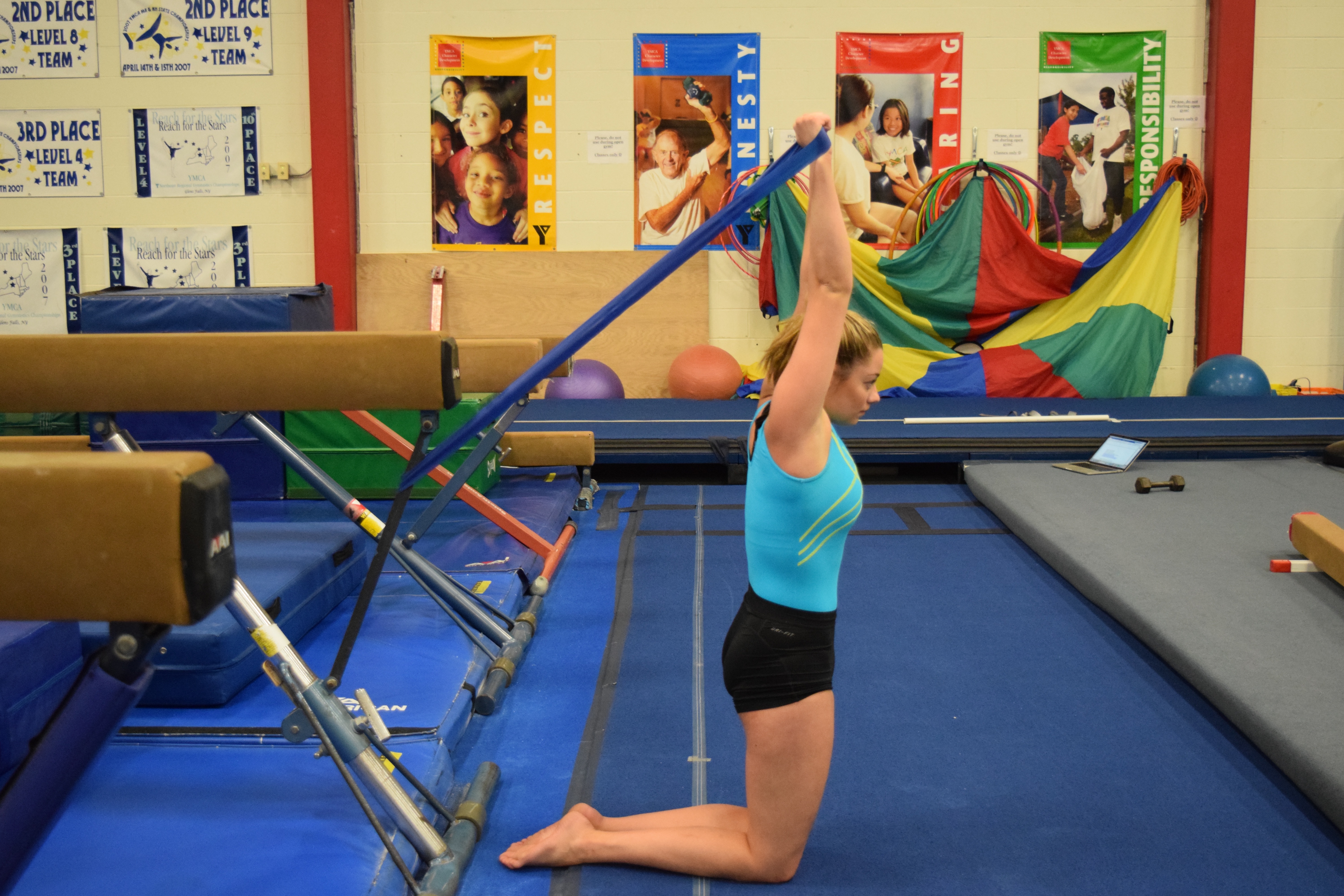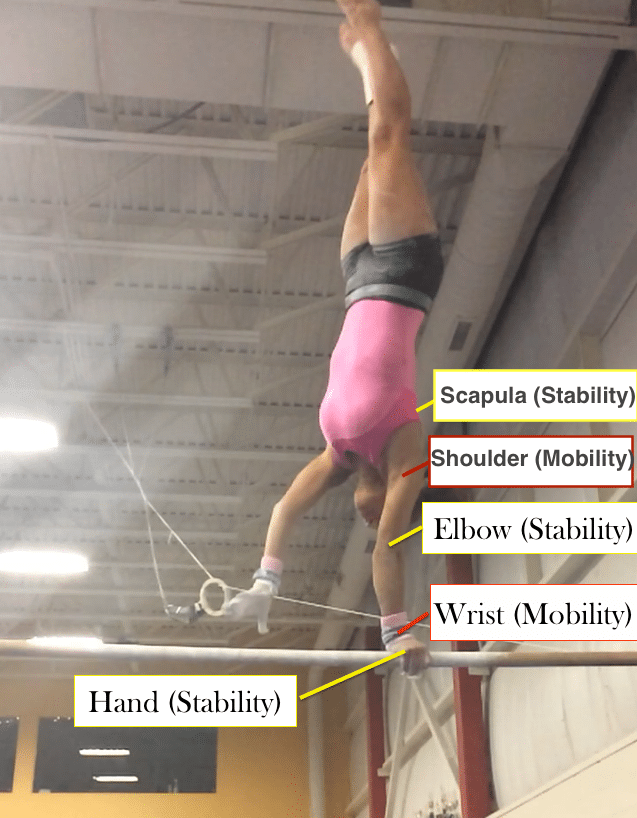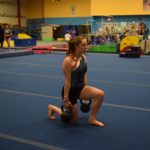Exactly How I Get Gymnasts Back to Handstands After Elbow Injury
First, I hope you are doing well during the ongoing coronavirus madness! My best wishes go out to you and your friends/family.
In thinking about the gymnastics medical side of things, one of the most common questions I get about working with gymnasts for elbow injuries is
“How do we know when it’s okay to return to weight-bearing? And what exercises do we use to make sure it’s safe?”
This is a great question, as gymnastics is very unique in demanding so much weight bearing on the shoulder, elbow, and wrist. These joints aren’t inherently built for this type of force. These joints don’t possess the same structures to handle that load as the hip, knee, and ankle do. There’s no meniscus or big cruciate ligaments in the elbow like we have in the knee.
So we’re often stuck at a crossroads here. With the need to get back to weight-bearing, but no road map to safely get back to it, things get tricky. To make things more tricky, there aren’t a ton of great science-based resources on returning to weight-bearing for gymnastics rehab.
We thankfully have some great new papers on the pathomechanics / surgical pathway for elbow Osteochondritis Dessicans (great 2019 paper here and 2018 paper here) as well as great papers on Ulnar Collateral Ligament rehab (great 2012 paper here and 2019 paper here).
While these are all good guides, they still don’t give concrete progressions of force for gymnastics medical providers to follow. I’ve been lucky to work with well over 500 gymnasts for upper extremity injuries by this point in my career. So, to help people out, I wanted to share the exact progressions that I have foundful. I also wanted to share some important concepts behind this progression in relation to timelines. Things differ quite a bit between less severe injuries like elbow strains/sprains, to more complex issues like UCL surgery or OCD surgery.
You can check it out here!
Want To Learn More?
This piece of getting back to weight-bearing is so important, but the reality is that there are many other things that have to go well during rehab. We also have to think about getting back to traction forces and hanging, handling high force plyometric impact on the arms, and high repetition.
There are so many things that have to go well in the acute, subacute, advanced, strength & conditioning, and return to sport phases. I’ve made the mistake of not knowing these things in the past, only to have gymnasts who keep struggling with pain, reinjury, or limited progress. A lot of people are confused and a bit overwhelmed when it comes to shoulder, elbow, and wrist rehab for gymnasts.
I have been putting together a huge course that aims to help people with a step by step guide to these injuries. In light of the terrible coronavirus situation we’re all stuck in, I’ve worked like crazy to it up. I’m excited to say, “Recent Advances in the Evidence-Based Evaluation and Treatment of Upper Extremity Injuries in Gymnastics” is officially open for enrollment. The clips above are a very small chunk of the entire monster course that has full lecture/lab videos, case study downloads, blank templates for the clinic, and more.
I know that a ton of people are stuck at home, and looking for ways to make the most out of their time with online education. So, to help people out I am launching it this week at a huge 50% discounted rate of $99. If you are a medical provider who wants to get better during this unfortunate time, this brand new 10-hour online gymnastics course is for you! You can check it out here to enroll, but act quickly because the deal expires Sunday, April 12th, at 12:00 pm EST. You can learn all about it by clicking the link below!
Recent Advances in the Evidence-Based Evaluation and Treatment of Upper Extremity Injuries in Gymnastics